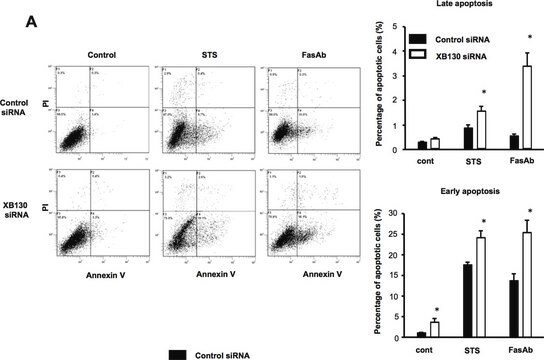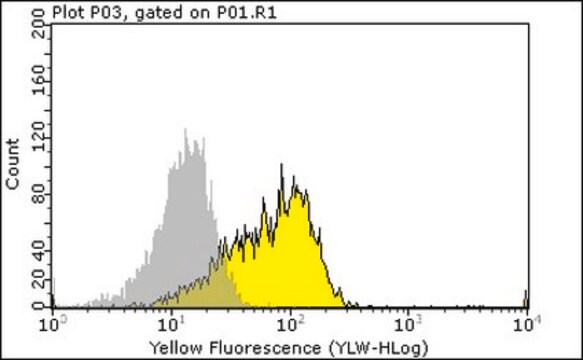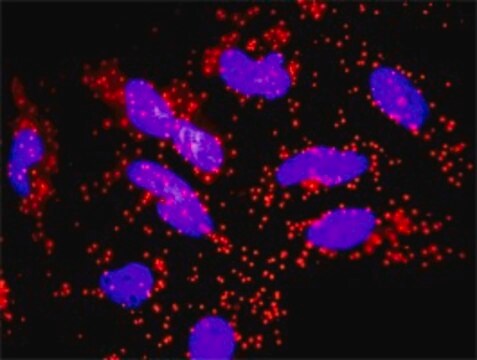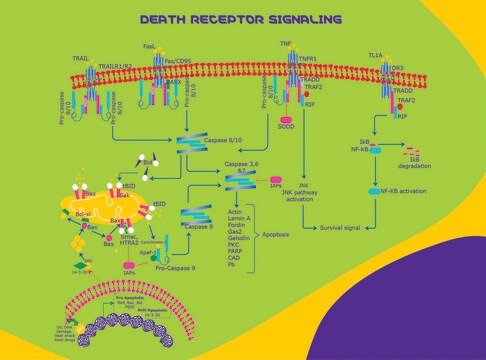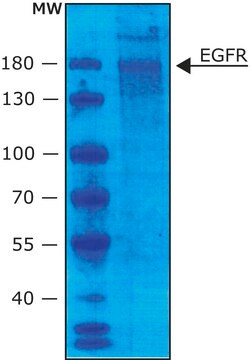Wichtige Dokumente
F4424
Monoclonal Anti-Fas
clone DX2, purified from hybridoma cell culture
Synonym(e):
-NotTranslated-
About This Item
FACS
microarray: suitable
Empfohlene Produkte
Biologische Quelle
mouse
Qualitätsniveau
Konjugat
unconjugated
Antikörperform
purified from hybridoma cell culture
Antikörper-Produkttyp
primary antibodies
Klon
DX2, monoclonal
Beschreibung
fluorescence intensity and maximum percentage positive similar to that obtained with saturating antibody levels
Form
buffered aqueous solution
Verwendung
10 μL sufficient for 1 × 106 cells
Speziesreaktivität
human
Methode(n)
flow cytometry: 4-20 μg/mL using cultured human Burkitt’s lymphoma Raji cells
microarray: suitable
Isotyp
IgG1
UniProt-Hinterlegungsnummer
Versandbedingung
dry ice
Lagertemp.
−20°C
Posttranslationale Modifikation Target
unmodified
Angaben zum Gen
human ... FAS(355)
Allgemeine Beschreibung
Spezifität
Immunogen
Anwendung
Western Blotting (1 paper)
- immunoblotting
- flow cytometry
- the induction of apoptosis
Biochem./physiol. Wirkung
Physikalische Form
Haftungsausschluss
Sie haben nicht das passende Produkt gefunden?
Probieren Sie unser Produkt-Auswahlhilfe. aus.
Lagerklassenschlüssel
10 - Combustible liquids
WGK
WGK 3
Flammpunkt (°F)
Not applicable
Flammpunkt (°C)
Not applicable
Persönliche Schutzausrüstung
Eyeshields, Gloves, multi-purpose combination respirator cartridge (US)
Hier finden Sie alle aktuellen Versionen:
Analysenzertifikate (COA)
Die passende Version wird nicht angezeigt?
Wenn Sie eine bestimmte Version benötigen, können Sie anhand der Lot- oder Chargennummer nach einem spezifischen Zertifikat suchen.
Besitzen Sie dieses Produkt bereits?
In der Dokumentenbibliothek finden Sie die Dokumentation zu den Produkten, die Sie kürzlich erworben haben.
Artikel
Quantitative and qualitative western blotting to validate knockdown by esiRNA. Sigma-Aldrich.com
Unser Team von Wissenschaftlern verfügt über Erfahrung in allen Forschungsbereichen einschließlich Life Science, Materialwissenschaften, chemischer Synthese, Chromatographie, Analytik und vielen mehr..
Setzen Sie sich mit dem technischen Dienst in Verbindung.